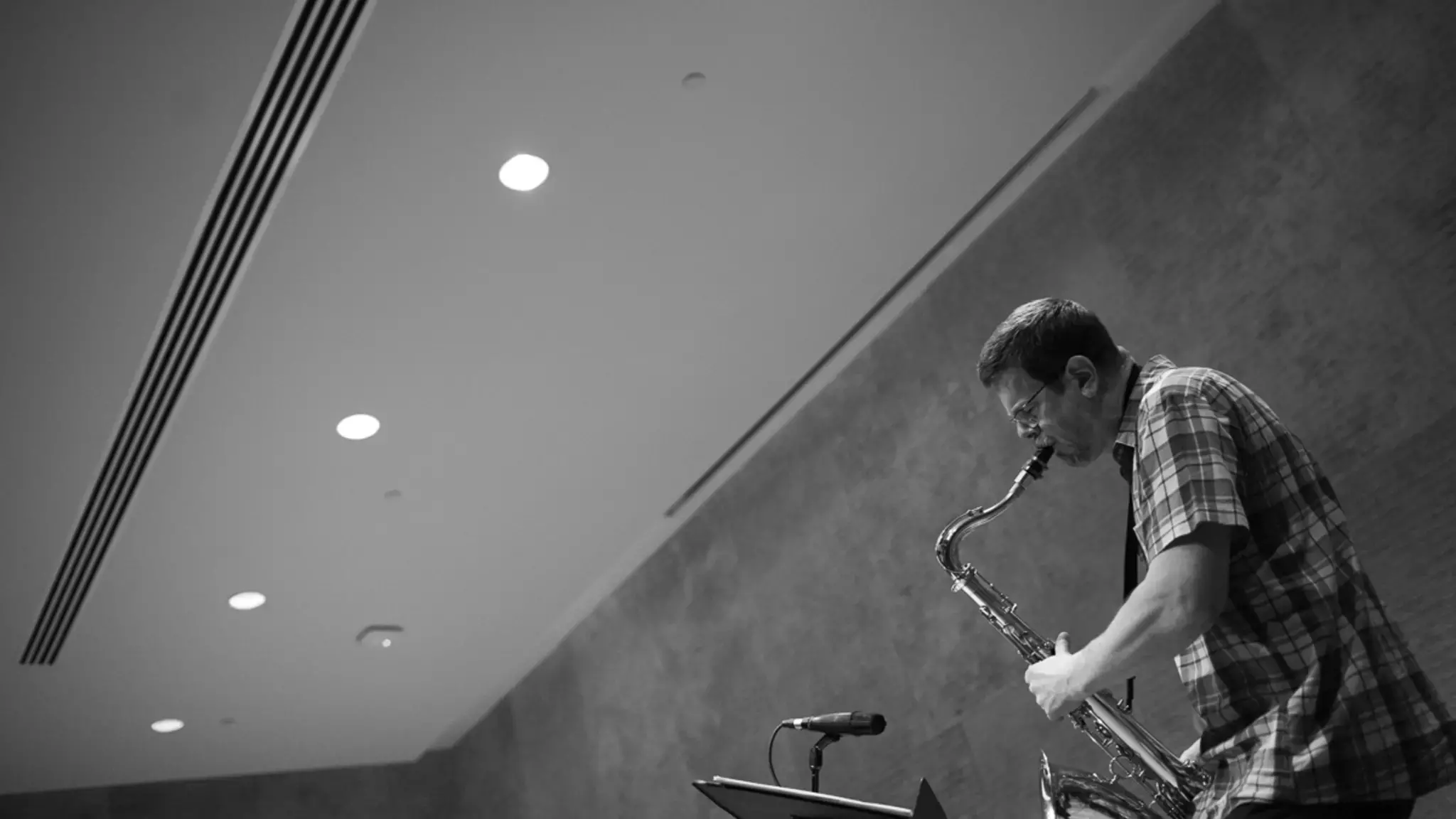

How might a world-famous art collection—its components, its composition—inform a new piece of music? MacArthur award-winning saxophonist and composer Ken Vandermark, whose new commission is a response to Philadelphia’s legendary Barnes Foundation, shares his thoughts.
I visited the Barnes Foundation this past February as a way to start my research. Before arriving, I was honestly expecting that any connection between my music and what Albert Barnes had assembled would be tenuous at best, because while definite correlations can be made between the visual and aural arts, these parallels are often tangential. When I saw how Barnes had organized his collection of art, however, I was immediately struck by how his system of display related to my current interests in the improvised music developed during the 1970s, particularly work innovated by musicians in organizations like the Association for the Advancement of Creative Musicians in Chicago and the Black Artists Group in St. Louis, and by Europeans connected to the Instant Composers Pool in the Netherlands and the Free Music Productions record label in Germany. From my point of view, these sets of artists explored and, in some cases, interrogated the cultural and political ramifications of American jazz and how that history of music related to, or did not relate to, their contemporary creative context. I am not sure what Barnes’ particular agenda was in the organization of his collection and the way he exhibited it, but from my standpoint, a direct association can be made between the aesthetics of these musicians and what Barnes presented to the public and the students at his school. In both cases the staging of the material, whether aural or visual, creates and almost forces an inquiry of the artwork by the audience, either through suggestion or outright implication.
A good example of what I am talking about in music is an album that the Art Ensemble of Chicago released called, Les Stances A Sophie, on EMI France in 1970. On it were compositions by the band that ranged from funk (Theme De Yoyo), material related to the free jazz of the mid-1960s (Theme De Celine), and an arrangement of Renaissance music from Western Europe (Variations Sur Un Theme De Monteverdi). All are deconstructed and investigated through the Art Ensemble’s methodologies at the time: the heavy funk groove of Theme De Yoyo is repeatedly ripped apart, the free energy of Theme De Celine is turned on its head and satirized, and the theme by Monteverdi is both played “straight” and as a jazz-based send up. The inquiry and examination of the genres that these compositions stem from do not only take place within the pieces themselves, but also in the way that the compositions are placed side by side on the album.
In the Barnes collection it is almost impossible for the individual pieces to be perceived outside of a group context because of the way the works as a whole are arranged throughout the galleries. As with the Art Ensemble of Chicago album discussed above, different time periods, genres, and forms are put side by side with an intention that may be obscure or difficult to decipher, but which has a clear intent nonetheless. And it is in this sensibility—the combination of artistic forces that creates an allowance for an individual piece to remain singular within an atmosphere of multiplicity—where I found a direct way to relate the work exhibited at the Barnes Foundation to my current interests in music, and how I want to compose for the Made to Break ensemble.